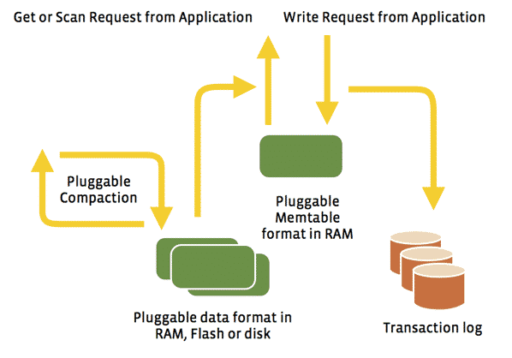The sheer bulk of data that is being generated by the today’s digital world is overwhelming. In total, 2.5 quintillion bytes of data is created daily. Such humongous, larger and complex data sets are known as “big data.” And it is becoming increasingly harder to manage all this data with conventional tools.
The opportunity
Big data is very significant for today’s tech world because with such huge amounts of data available, it is possible to gain newer insights, discern trends and push the limits of digital frontiers. Imagine being a tech company which relied on a few thousand people to gather data and suddenly, it is able to access data from millions of users. This will surely be a dream-come-true for that company. The more relevant data a company has the more decisive edge it will have over its rivals. It will be able to create products based on this data and improve them, based on the feedback from the big data.
In fact, according to some studies, an effective use of big data can enhance a retailer’s operating margin by as much as 60 percent! Similarly, if the healthcare industry in US made apt use of big data, it can ramp up its value by $300 billion annually. Even governments in Europe can cut down on their operational expenses by €100 billion simply by utilizing the potential of big data. In a way, big data is the way forward for our world. It’s like an immense monster that, if tamed, can make one very powerful.
How to use big data?
Big data can be used in a number of ways to increase an organization’s productivity. It can help make available information more useful and transparent. Moreover, by analyzing the bulk load of big data, organizations can bring out the relevant variable which affects their performance, and then take measures to improve on those fronts. For instance, if an organization had the daily production values for the past ten years, rather than the last two years, it can more accurately calculate the time of the year, month or week when net production dips.
Another significant use of big data is that it enables organization to read customer needs and trends more closely, thus creating such customized products which will be more popular among the customers. Also, the availability of big data can help make the to-shots make effective managerial decisions.
The problem
However, things are not that rosy in this emerging field. With this immense opportunity comes a huge problem. While getting a lot of data is good and helpful, it can get very hard to shift through this data and make any meaning out of it. And that is precisely the problem which is plaguing many IT companies.
Many organizations simply lack the necessary logistics to handle a bulk load of data. If an organization can handle data only in terabytes and if the related big data is in petabytes, the organization will essentially miss out on a lot. At the same time, a competitor who can harness the petabytes will be on an advantage. Similarly, big data essentially works best when an organization can respond in real time. Again, not many companies have the ability, and the systems, to do so.
Technologies used to handle big data
Like I said earlier, the conventional data-processing tools are too outdated to deal with big data. To process such a load, newer and more advanced tools are required. Some tools which have been recommended in a 2011 McKinsey report include genetic algorithms, crowdsourcing, effective classification, neural networks, pattern recognition, simulations and visualizations.
Any organization which plans on making use of big data will essentially have to ramp up its data storage and processing systems. It will have to use newer technologies and put the skilled people in place to handle the data through new tools and better techniques. Big data itself is of no use. It’s the proper and effective use of this data that can truly reshape the dimensions of an organization.
Is big data a pipe dream?
Like most cutting-edge technological ideas, the notion of big data has also faced opposition by many. The chief argument of the critics is that by handling petabytes of data, organizations necessarily lose focus and the results they generate are inaccurate. For instance, if an organization can pinpoint the needs of its customers by analysing feedback from a 1,000 customers, it may not be able to do so when it tries to analyse data from a million customers.
These objections seem quite legitimate. But they point to the same conclusion that unless an organization is ready to handle big data, it can not make any good use of it. And to use big data, an organization will have to reshape its entire architecture. From managerial decisions to on-hands work, the organization must be steered to a position where it could build a capacity to use big data. So while big data may indeed be a pipe dream for now, it still holds virtually infinite possibilities for the future to come.
Courtesy: IBM/ McKinsey/ iMediaConnection
[ttjad keyword=”hot”]


![Read more about the article Samba [File Sharing] Comes To iOS, Try It Now](https://thetechjournal.com/wp-content/uploads/2011/07/Samba-On-iOS.png)
